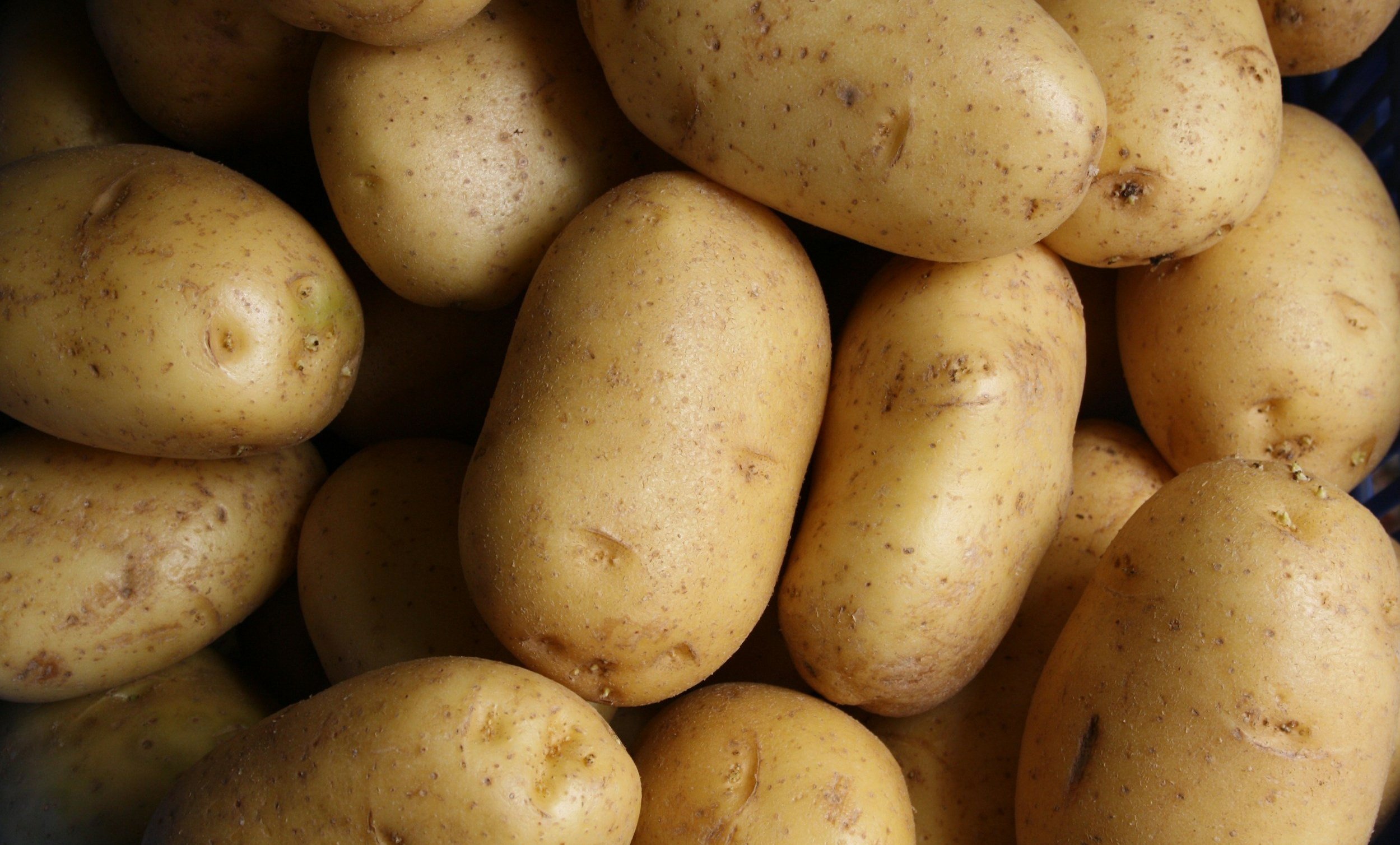
FACT FILE: POTATOES
How good are potatoes? They’re delicious in just about any form and are the ultimate comfort food on cold, rainy days. Read on for information about its health benefits, key phytonutrients, and suggestions for cooking, usage and storage.
-
Potatoes are a tuber; for energy storage by the plant.
They grow underground on the roots of potato plants, which are in the same family as tomatoes and eggplant.
Potatoes are a good source of energy, fibre and carbohydrates, and are a staple food in many parts of the world.
-
Potatoes are almost always eaten cooked.
Try and avoid only eating potatoes as chips: with added oil and salt. For a healthier alternative, wash potatoes, cut in half longways, then into wedges. Tumble wedges in 1 tablespoon of oil, ½ teaspoon sea salt and 1 teaspoon of oregano. Spread out on an oven tray and bake for 35-45 mins at 180°C.
Potato flavour provides ‘umami’ – a pleasant savoury taste produced by glutamate – an amino acid.
The fibre and carbohydrates are very satiating: they make you feel full and satisfied.
For a low-calorie meal, potatoes punch above their weight in terms of satisfaction.
Nothing more warming than a jacket potato with a sprinkle of grated cheese and sea salt and a grinding of black pepper!
Waxy Potatoes: May have a lower Glycemic Index than starchy potatoes. Waxy potatoes make great baked, roasted and mashed potatoes; they have a more yellowy coloured waxy flesh.
Starchy Potatoes: Make great baked and roasted potatoes, and mash; they have white flesh.
All Rounders are great for everything including frying as chips.
When you eat potatoes, enjoy the skin too, as the fibre and many of the nutrients are in the skin, and cooking with the skin on helps retain nutrients better. If you must peel them, only remove a thin layer of the skin with a vegetable peeler and retain more of the nutrients that lie just below the skin.
-
For best results, store brushed potatoes in a cool, dark place.
Store washed potatoes in the refrigerator (although this isn’t a great method for potato storage as it turns the starch into sugars) – or better still: eat soon after purchase.
Steaming and oven baking are the best cooking methods to capture the nutrients in potatoes.
To get the most fibre, leave the skin on.
-
Yellow fleshed potatoes contain more Vitamin A (from beta-carotene) than white fleshed ones; Vitamin A is a potent antioxidant.
Red skinned potatoes, and purple fleshed potatoes contain anthocyanins: the same compounds that make blueberries…blue. These are also active antioxidants. The colour may change with cooking.
Potatoes should never be green though, don't eat or use green potatoes, which have been exposed to the light. Although the green colour itself is simply chlorophyll, it indicates other compounds have been produced which can be toxic.
As a source of Potassium, Niacin and a good source of Vitamin C, one serve (75g) of potatoes contributes to:
A healthy brain and nervous system.
Energy and normal metabolism.
Healthy bones and joints.
A Healthy heart and circulation.
Healthy immunity.
Healthy skin.
Good hydration
For more information check out www.veggycation.com.au.
Glycemic Index: Potatoes haven’t scored well to date for Glycemic Index (GI), which represents the extent to which different carbohydrate-containing foods cause blood sugar levels to rise after consumption.
The GI of a baked potato is 111, and a boiled one, 82 (serving size of 150g).
Varieties of salad potatoes, with yellow waxy flesh have lower GI, such as cv Nicola (with a GI rating of 58).
Boiled potatoes, chilled overnight have a glower glycemic index, as the starch changes form. Add a vinaigrette dressing, and the GI benefits improve further.
Tip: To produce a low GI potato salad, steam large chunks of waxy potatoes with the skin on, allow to cool overnight, then dress with a lemon or pesto vinaigrette and some spring onions and parsley.
-
The serving size for potatoes is a point for discussion. Australia’s official dietary guidelines specify that towards your five serves a day, one serve of potatoes is ‘½ a medium potato’, which is about 100g.
Half a medium white fleshed potato (skin on) such as cv Nicola (100g), provides:
A good** source of Vitamin C (Ascorbic acid)
A good** source of Potassium (444 mg, which is 30% more than one banana)
A source* of Niacin
A source* of Folate
If you eat a whole potato (200g), this amount also provides 10% of your daily protein, and a source level of fibre, PLUS source levels of pantothenic acid, thiamine, iron and magnesium, and a whopping 2½ times the potassium found in a banana!
Note: 1 large potato is 350g or more, so if you eat this much, you will also get loads of fibre, too!
*A source means one serve provides at least 10% of the Recommended Daily Intake, or at least 2g in the case of fibre.
**A good source means one serve provides at least 25% of the Recommended Daily Intake, or at least 4g in the case of fibre.
